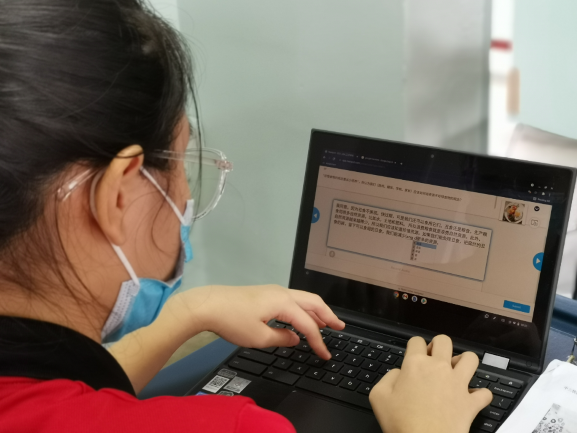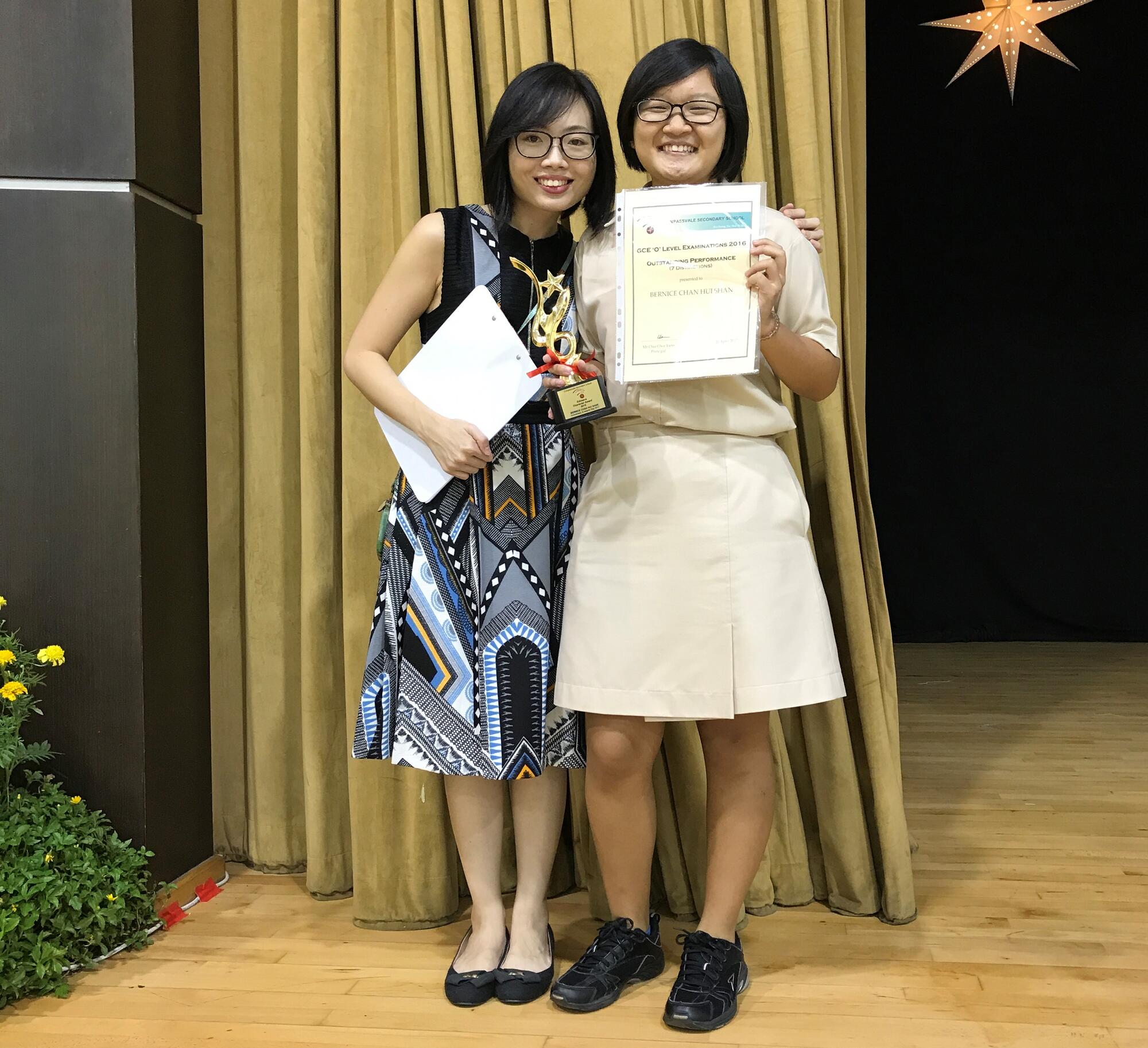Learning Chinese – Going Beyond Grades in Pupil Assessment
09 Dec 2008
This is the ninth article in Schoolbag’s series of 10 features on the new primary school Chinese Language curriculum.
An earlier version of this article was published in Lianhe Zaobao on 15 May 2007.
Mention “assessment” and pupils and parents alike will shudder at the thought of tests and examinations. Dreaded they may be, but exams remain vital tools to gauge the relative abilities of pupils. However, it’s also important to point out that written tests and examinations don’t provide the whole picture.
Learning is a continual process. Thus, instead of relying solely on formal exams, schools are increasingly turning to continual modes of assessment. Project work, learning portfolios, class reports or even classroom quizzes and group discussions complement written tests to give a more comprehensive view of pupils’ abilities. Pupils also get to display their strengths in different areas and feel less pressure from examinations.
Using assessments to promote learning
This shift towards a continual “Assessment for Learning”, where assessment is used as a means to promote learning, applies to the new primary school Chinese Language curriculum as well. Previously, we had mainly relied on “Assessment of Learning” where assessment was administered mostly to measure pupils’ performance for ranking and placement purposes. Now, while written test scores still serve as important and objective measures of learning attainment, the new curriculum also aims to cultivate a healthy interest in the language and motivate pupils to improve their Chinese skills even after they leave school.
To achieve this end, pupils take part in various types of assessments that offer regular feedback on how well they understand their lessons and areas that need improvement. Through these assessments, teachers also get to adjust their teaching strategies, identify and help pupils who are weak in particular areas and improve the overall learning process.
“Assessment for Learning” is thus a continual approach that lets pupils improve their learning over the course of a term, recognise their strengths and weaknesses and ultimately work more effectively towards achieving the learning objectives. What’s more, pupils are assessed not only by their teachers but also by their peers and themselves. During group exercises, teachers might supervise peer assessments or self-assessments. These sessions allow pupils to learn from each other, appreciate the differences between individuals and reflect on what they have learnt.
It’s not just about grades: Using rubrics for qualitative assessment
Progressive assessment methods are taking root in more schools, as teachers see the value of more flexible means of assessment apart from tests. Instead of simply giving numerical grades, teachers are also starting to mark assignments using rubrics. These are sets of qualitative criteria that help students evaluate their own performance and pin-point areas that need improvement.
Rubrics are especially useful in open-ended assignments such as essays and project work that do not have standard answers. Teachers can clearly define the objectives and standards for a particular assessment. Based on their demonstration, pupils also receive specific recommendations and suggestions for improvement.
Under the new Chinese Language curriculum, teachers assess pupils using a mix of written tests and continual assignments. This combination provides a balanced view of the pupils’ abilities and progress over the school term. Teachers and pupils enjoy timely feedback about how well they are faring, and the rubrics provide pupils with descriptive comments and practical suggestions for future improvement.
Doing well in school is no longer simply about “mugging” for a big exam at the end of the term. Pupils now have the opportunity to perform in various exercises that tap on other skills such as creativity and verbal fluency. It’s also a chance for teachers and pupils to interact more and explore ways to improve the learning process. The result, for all parties, is less stress and the satisfaction of a job well done.
Rubrics: how do they work?
Using the example of a CL exercise on “writing a New Year greeting card”, a teacher would provide a detailed explanation of the qualities required instead of just the general format. For instance, the teacher could explain that pupils should integrate real-life elements into the card and that the writing should complement the given pictures. Pupils will then be able to understand the objectives and standards of the assessment before participating in the learning activity.
When pupils hand in their work, the teacher uses the following rubric to score the cards:
Scoring criteria for new year cards (total score: 30)
| Excellent 24- 30 points |
Good 16- 23 points |
Average 8- 15 points |
More effort needed 0-7 points |
|
| Creativity | Design of card shows strong creativity | Design of card shows some creativity | Design of card shows an attempt at creativity | Design of card shows lack of creativity |
| Content | Pictures and text are matched in a complementary and mutually reinforcing manner | Pictures and text are matched in an appropriate manner but with some errors | Pictures and text are simplistically matched and there are some errors | Pictures and text are matched in an overly-simplistic manner with many errors |
| Expression | Sentences are very fluent and choice of words and phrases are very appropriate | Sentences are fluent and choice of words and phrases are appropriate | Sentences are somewhat fluent and choice of words and phrases are not very appropriate | Sentences are not fluent and choice of words and phrases are not appropriate |
So, instead of just a numerical score, the rubric shows pupils how well they did, as well as the quality and creativity they have shown. Pupils would see where they could work on to do better in future exercises.
Contributed by:
Tay Yuan Zhuang
Chinese Language Curriculum Planning Officer
MOE
????????
?????????“??”?Assessment?????????????????????????????????????????????????????
???????????????????????????????????????????????????????????????
??????????
?????????????????????????????????????????????????????????
???????????????????????????????????????????????????????????????????????????????????????????????????????????????????????????????????????????????????????????????????????????????????????????????????????????
????????????
???????????????????????????????????????????????????????????“??????”?Assessment of Learning????????????
?????????????????????????????????????????????????????????????????????????????????????
?????????????????????????????????????????????????????????????????????????????????????????????????????????????????????????
????????????????????????????????????????????????????????????????????????????“???????”?Assessment for Learning????????“??????”?????“???????”???????????????????????????????????
???????????????????????????????????????????????????????????????????????????????????????????????
????????????
????????????????????????????????????????????????????????????????????????????????rubrics?????????????????????????????????????????????????????????????????????????????????
??????????????????????????????????“??????”?“???????”???????????????????????????????????????????????????????????????????????????????????????????????????????????????????????????????????????
?????????
?????????????????????????????????????????????????????????????????????????????????????“?????”??????????????????
????????????30??
| ?? 24- 30? |
?? 16- 23? |
?? 8- 15? |
???? 0- 7? |
|
| ?? | ???????? | ????????? | ?????????? | ???????? |
| ?? | ???????? | ???????????? | ?????????? | ????????????? |
| ?? | ?????? ????? | ???? ??????? | ?????? ?????? | ????? |
????????????????
????????
1) ??????? (rubrics) ????????????????????????
2) ?????????????????????????????????
3) ?????????????????????????????????
????“?????”????????????????????????????????????????????????????????????????????????????????????????????????????????????
????????
???????
???
???2008?10?24?






.jpg)


